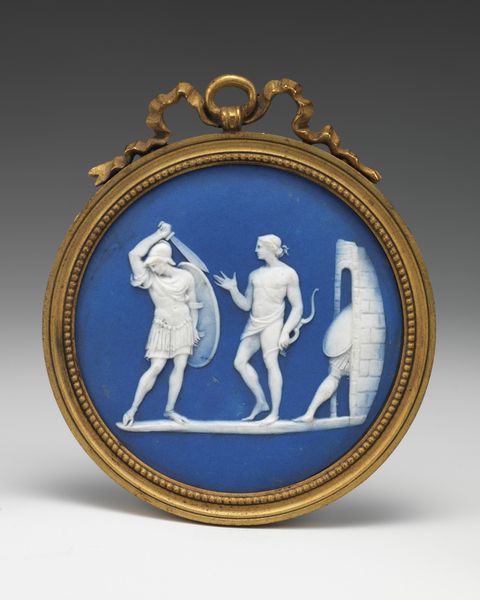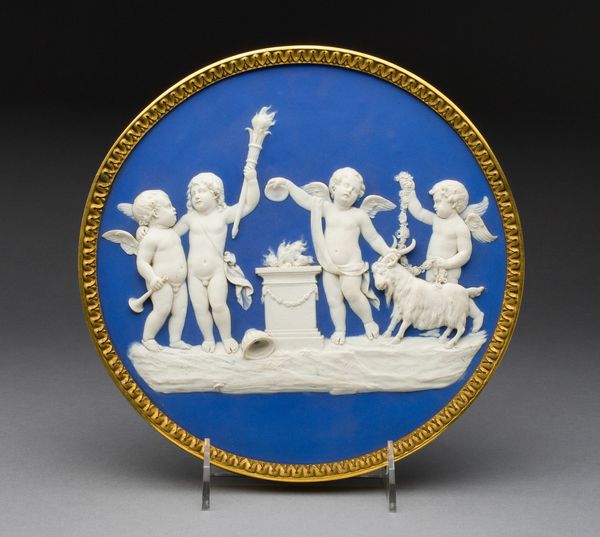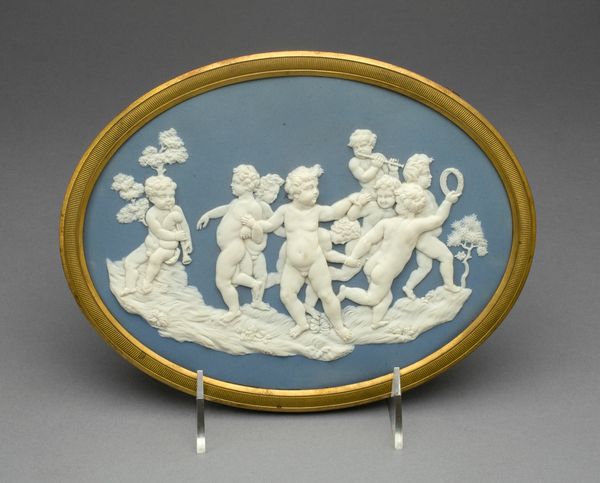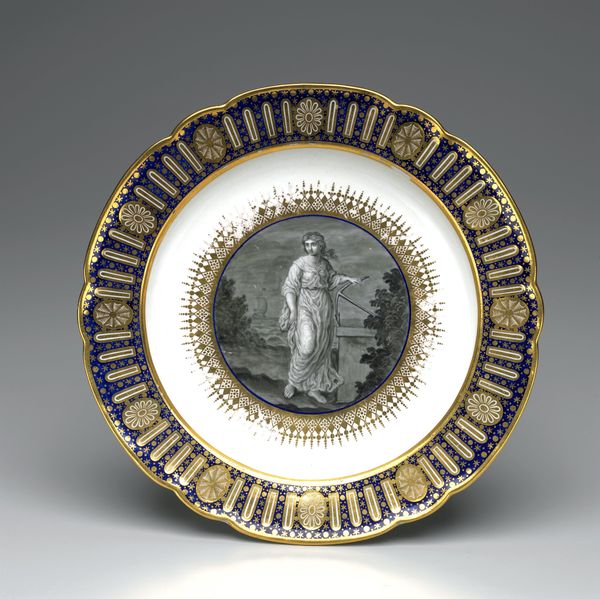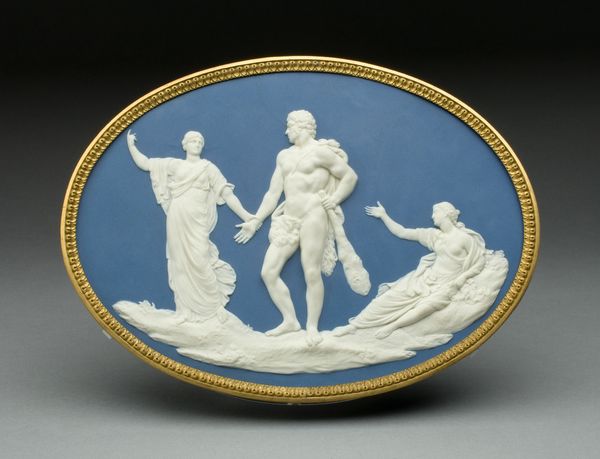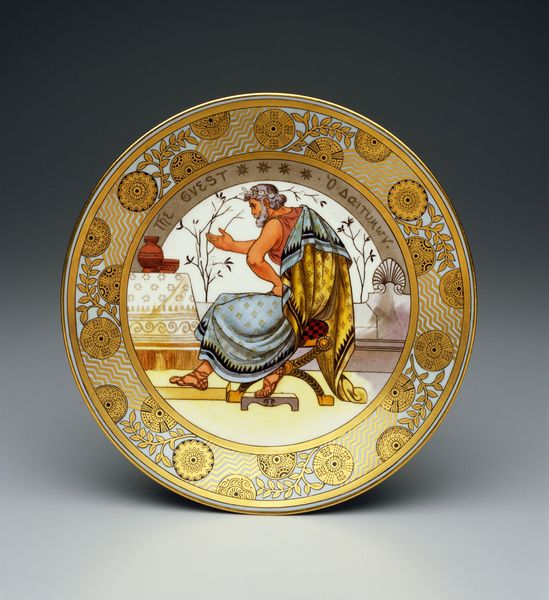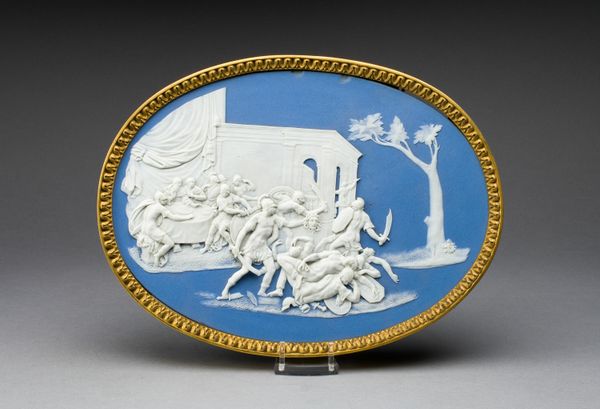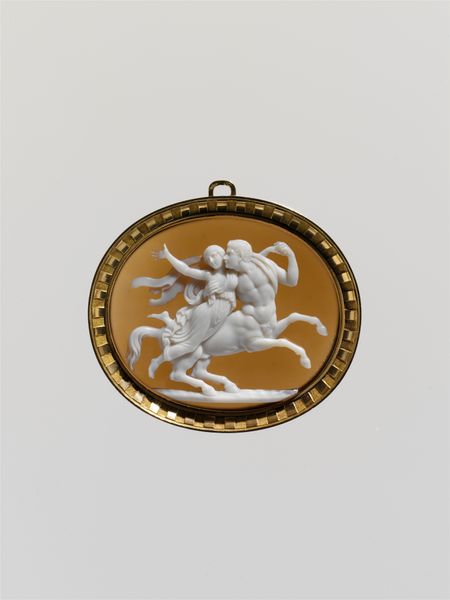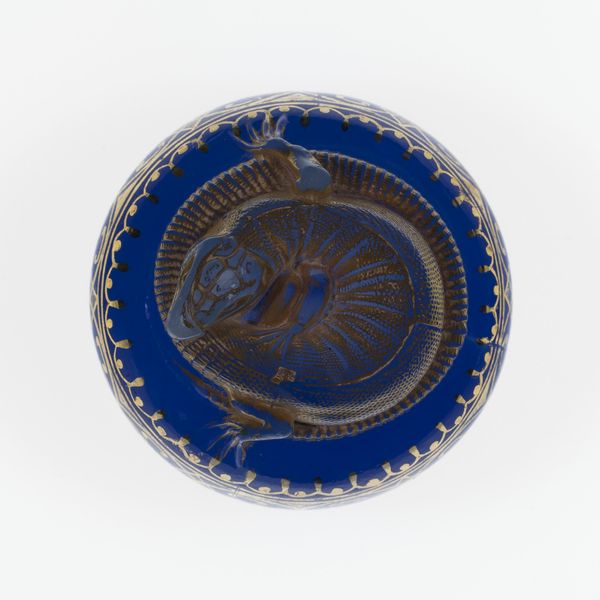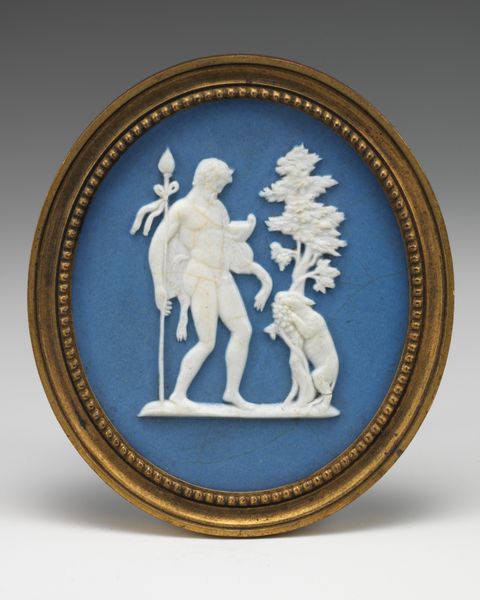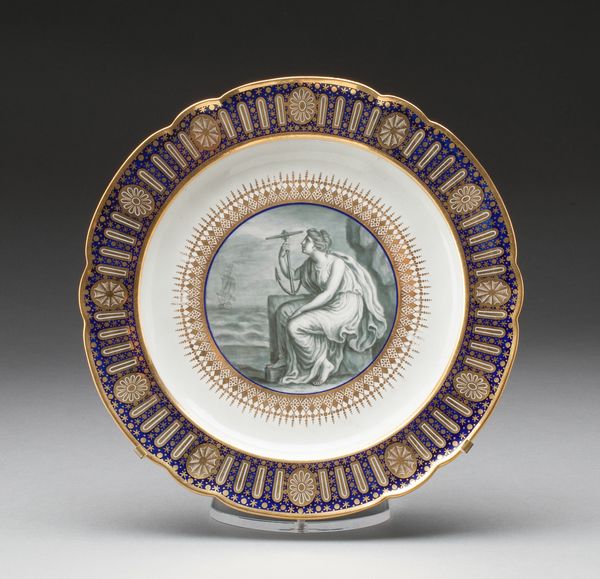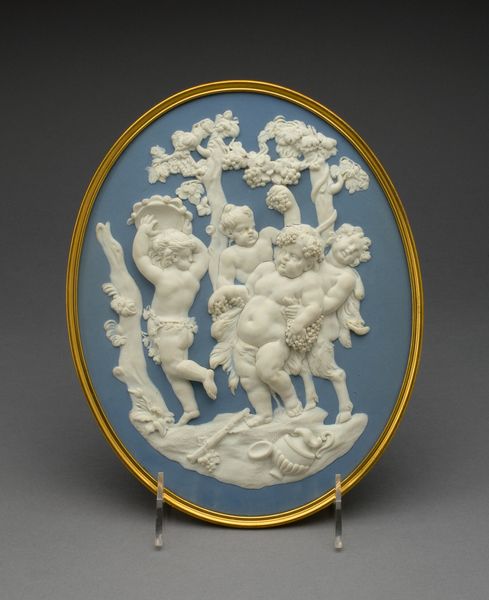
#
3d sculpting
#
3d image
#
3d printed part
#
3d printing
#
product fashion photography
#
virtual 3d design
#
child
#
product design photgrpaphy
#
3d shape
#
3d digital graphic
#
metallic object render
#
men
Dimensions: 9 5/8 x 9 5/8 x 1 3/8 in. (24.4 x 24.4 x 3.5 cm)
Copyright: Public Domain
Curator: Here we have an intriguing ceramic plaque created around 1890 by Ott and Brewer. The work is currently held in the collection of the Metropolitan Museum of Art. Editor: It strikes me as…dreamy, almost saccharine. The crisp white figures against that deep, starry blue feels quite theatrical. And the slight iridescence to the gold trim along the edge is really capturing my eye. Curator: I can understand the reading of ‘dreamy’. Ott and Brewer have employed classical iconography, a central female figure who seems to embody grace and perhaps divine guidance surrounded by a flock of children under the celestial backdrop. It’s rich with allegorical meaning. Editor: Allegorical, sure, but allegorical in what context? The late 19th century was an era of significant social upheaval, immense class disparity and industrial expansion in America. What are these idealized figures obscuring? Is the “divine guidance” just justification for maintaining a deeply unfair status quo? Curator: That is one potential reading. Another might suggest these images reflect a longing for order, for the kind of stability traditional symbols provided amid rapid social changes. Think of it as a symbol for collective aspirations framed in enduring artistic traditions. The figure's openness to the children suggests inclusivity, mentorship, and fostering shared dreams. Editor: That framing seems overly generous. Who has access to those "shared dreams"? The children depicted, seemingly all white, further limit the narrative. Who is included? The stars appear to me more like an aspirational smokescreen that obscures very real-world systemic issues. Curator: We have to remember these images also hold power through their simplicity and timeless nature. Even viewed now, this image may provoke comfort from a distant past that can continue informing today. The heart image represents love and its nurturing of collective progress through time. Editor: Perhaps, but to truly understand art, we need to delve deeper. We need to consider how those aspirations are actually implemented. Who benefits? Who is left out of the idyllic dream and why? I am wary of symbols offering only surface-level appeal if they ignore deeper structural inequalities. Curator: I acknowledge that and agree; there is no universal interpretation or perfect symbolism here. Every viewer brings their own personal associations, historical awareness, and emotional responses. Editor: Absolutely, and hopefully, in turn, a nuanced and socially conscious interpretation of a piece of art.
Comments
No comments
Be the first to comment and join the conversation on the ultimate creative platform.
